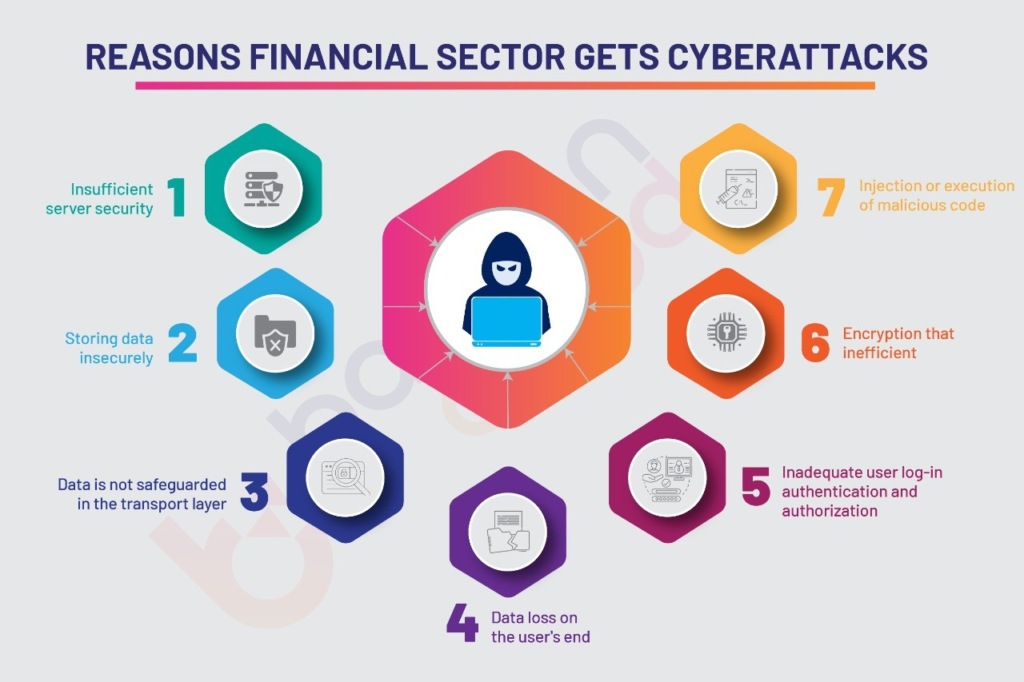views
How Are Cybercriminals Affecting Financial Institutions?
How Are Cybercriminals Affecting Financial Institutions?
For hackers, the financial industry is like the ideal gift. Banks and other financial organizations hold all the information a cybercriminal might need, from your financial information and bank account information to identity information. Just looking at some of the breaches in the financial services industry from 2022 reveals some of the most significant theft. For instance,

In March 2022, 3 million customer’s data was stolen during a cyber attack on the credit bureau TransUnion S.A.
In the second-largest cryptocurrency robbery to date, Ronin, a blockchain startup, lost $615 million in ether and USD Coin tokens on March 23, 2022.
In June 2022, Over 1.5 million customers of the US-based Flagstar Bank had their personal information compromised.
The Importance Of Understanding Cybersecurity Trends
A New York Federal Reserve report demonstrates how appealing this industry is to cybercriminals. Financial institutions undergo cyberattacks 300 times more frequently than other industries,
The following are the primary reasons to be aware of cybersecurity trends:
- More financial transactions than ever are digital because of a surge in cashless transactions.
- The financial industry’s poor cybersecurity may compromise customers’ data.
- Recovery from a breach can be costly and time-consuming.
What Types Of Attacks Threaten The Financial Sector?

- Special Access – People directly accessing the company’s key processing facilities steal confidential information, proprietary information, or data that could harm the company’s reputation.
- Supply-chain espionage – Cybercriminals use fake software on a financial institution’s network (packaging, production, and distribution).
- Disruption of the Telecommunications Network – Communication infrastructure is critical to the operation of financial networks. Cybercriminals directly disrupt the work of key economic players by targeting telecommunications networks.
- The takeover of an Account – A targeted phishing Email is typically sent to a company’s higher management, who has all authority related to financial transfer on behalf of the company.
- Breaches by a Third-Party Payment Processor – The computer network of a payment processor that satisfies hacker’s needs get compromised. They steal internal bank codes, credit card details, and client records.
- Exploiting Securities and Market Trading – Cybercriminals start an illicit financial transaction using the victim’s bank or brokerage account. These transactions are often accompanied by telephone denial of service (TDoS) attacks, in which the victim’s legitimate phone lines are bombarded with spam calls. So the bank can not confirm the transaction.
- Skimming A.T.M.’s and point-of-sale fraud – Thieves attach a skimmer to an A.T.M.’s exterior or interior to steal card numbers and P.I.N. codes. The perpetrator either uses false cards to withdraw money from the accounts that have been compromised or sell the stolen data online.
- Mobile Banking Exploitation – Cybercriminals execute man-in-the-middle attacks against mobile devices. Financial institutions occasionally employ text messaging to confirm that a valid person has begun online transactions. Transaction confirmation messages get forwarded to the cybercriminal.
Types Of Attackers

Ways To Remediate Economic Cyber Attacks
There have been increasingly more crimes in the banking sector, which has led to substantial financial losses. As the most significant economic pillar in our society, The finance sector must be protected from cyberattacks. Banks and customers should be aware of the risk and safety precautions to resist cyber-attack.
1. Financial institutions need to ensure that employees are not allowed to access or install unauthorized software.
2. All employees should be trained about the dangers of opening email attachments from unidentified sources.
3. I.T. department of the financial institution needs to enable firewalls on their networks.
4. Financial institutions must use 2FA apps or physical keys and enable 2FA on all online accounts.
5. Update all the systems regularly.
6. Organizations need to install in all system Anti-spyware and antivirus software.
7. Customers must receive notifications and automated messages from their Financial institution confirming the validity of their transactions.
8. Customers must be given instructions on how to stay safe when using the bank’s website.
9. Institutions must make a policy to change passwords every 45 or 90 days.
Conclusion
The financial sector offers a wide range of chances to enhance its cybersecurity. Financial institutions can concentrate on identifying countermeasures to cyber threats and putting them in place on their networks while embracing more recent technologies that can offer a seamless experience.











